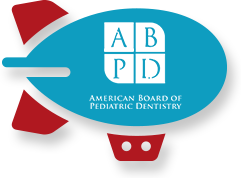Essential Tooth Tips for the Parents of Infants & Toddlers
October 22nd, 2015
More than 40% of children have cavities by the time they reach kindergarten. In fact, The CDC reports that tooth decay is the most common preventable disease in children and while the cavity rate in children of older age groups has been slowly declining, the rise in cavities among those under 5 is actually increasing. Unfortunately parents often wait too long to begin a routine of oral care and to start caring for emerging teeth. Here are five essential tips to get your child started on the right path:
1. Make oral care a part of a daily routine.
Getting into a daily habit of taking care of your child's mouth as soon as possible will increase the likely-hood that you (and eventually your child) will keep up this healthy practice once teeth appear.
2. Use a washcloth to clean your child's mouth before teeth arrive.
While using a brush isn't advisable on infant gums and toothpaste isn’t needed before teeth emerge, using a soft wet washcloth gently wiped over gums twice a day is a great way to begin a regular oral routine for your child. This will help to keep bacteria at bay and will also keep your child's gums healthy.
3. As teeth arrive, use the correct toothbrush.
When the first teeth start to show up (usually around 6 months, but this can vary greatly from child to child), use a toothbrush specifically designed for babies. These brushes have smaller heads for smaller mouths and very soft bristles to avoid damaging sensitive gums. Brush your child’s teeth until he or she is able to brush properly themselves. You will also want to pay close attention to the type of toothpaste you choose. Use only a "smear" for very young children and a pea sized amount of toothpaste as they grow older. Young children have trouble not swallowing toothpaste, so keep the amount minimal and consider using fluoride free toothpaste until your child has learned not to swallow when brushing.
4. Know what tooth decay looks like.
Be aware of the signs of baby tooth decay (spots or pits on teeth) and stay up to date on dental exams.
5. Establish a dental home.
The American Academy of Pediatric Dentistry recommends establishing a "dental home" by age one or when the first tooth appears, whichever occurs first. A dental home is a practice that you and your child are familiar with and have established a relationship with the dentist. Finding a practice that you trust early in your child's life will allow the dentist to catch potential issues before they become bigger problems.
We would love to be your child's dental home! Call us for an appointment today!



